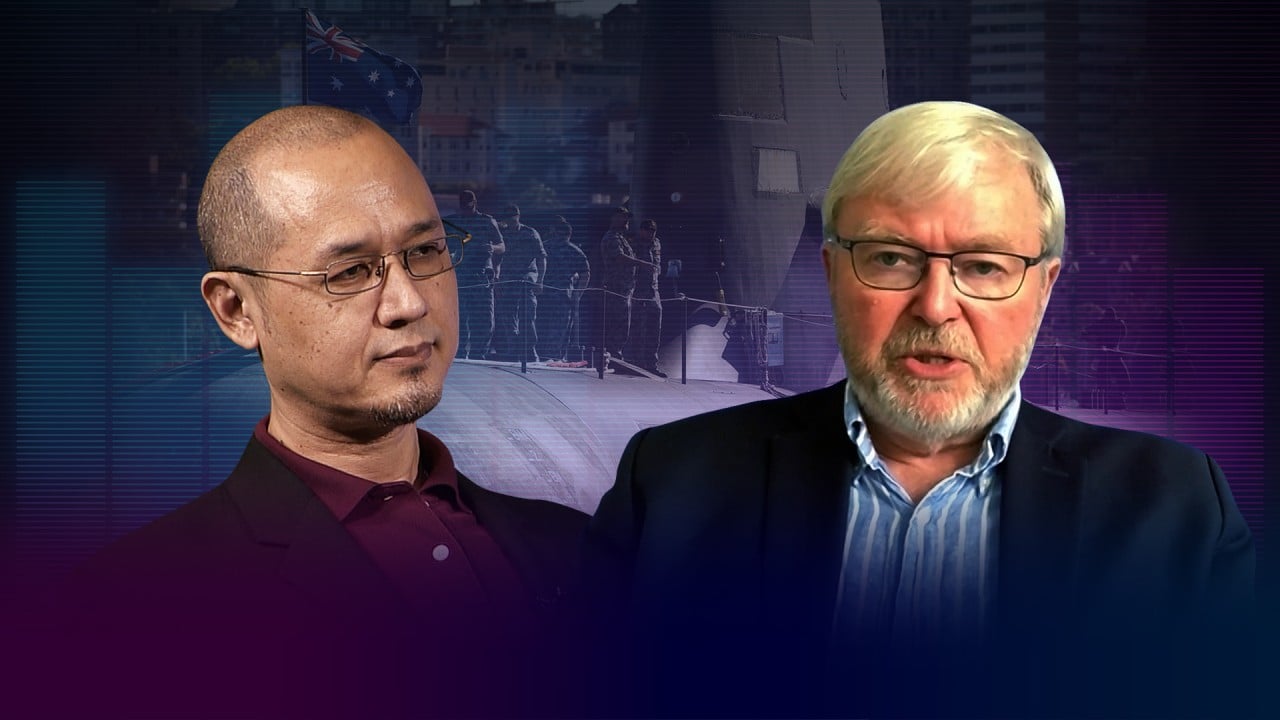
Does Australia really want to be at the front line of US aggression against China?
- The US is steering Australia towards becoming a bridgehead against China with AUSMIN promises of troops and help in producing guided missiles
- Canberra must re-evaluate its commitment to the US Indo-Pacific strategy if it genuinely seeks peace, prosperity and regional stability
As Australia and the United States work to deepen their military alliance, two major undertakings from the 33rd Australia-US Ministerial Consultations (AUSMIN) are set to drastically affect the balance of peace and stability in the Asia-Pacific.
These plans have sparked a maelstrom of media attention and public commentary. Despite this, Australian Defence Minister Richard Marles is optimistic and hopes to see the production of guided missiles start within two years. “Australia at this moment has no better friend than America,” he said.
The Ukraine conflict has highlighted the paramount significance of a seamless and uninterrupted supply chain in modern warfare, especially for ground-to-ground missiles. The complexities of this crisis are making increasingly clear the indispensable role of well-functioning ammunition distribution in maintaining tactical advantage and strategic efficacy on the battlefield.

The recent AUSMIN forum left no doubt that Australia has become Washington’s most preferred partner in the Asia-Pacific to counter Chinese influence. Marles’ “no better friend” boast corroborates this.
As geopolitical dynamics continue to evolve, ties between the US and Australia have taken an intriguing leap forward with AUSMIN, encapsulating a new chapter in their relationship – and also throwing up new challenges to the region’s peace and stability.
By serving as a frontline base for Washington’s aggressive stance towards China, Australia seems to be tethering itself to a volatile path and placing the lit fuse in the hands of American policymakers as they continue their provocative approach towards China.
This entanglement raises questions about Australia’s strategic choices and the potential consequences of being drawn further into the tumultuous geopolitics orchestrated by the US. Australia’s role in this grand power play may ultimately expose it to unpredictable and adverse outcomes in the complex arena of global affairs.
The recent AUSMIN forum in Brisbane has only solidified Australia’s military collaboration with the US. In particular, by accepting US help to produce guided weapons, Australia has signified a heightened commitment to America’s military-industrial complex.
The array of ambitious defence cooperation blueprints unveiled at AUSMIN, meant to intensify Australia’s role as the US’ strategic military partner, helps Canberra to project its influence in the Asia-Pacific. But the deepening entanglement may also further bind Australia to the whims and geopolitical aspirations of the US, potentially entrenching Australia in conflicts not inherently its own and compromising its autonomy in foreign policy.
Australia must decide: Is China a friend or a foe?
It would seem that Canberra is unwittingly falling into the strategic quagmire of prioritising US interests over its own, paving the path to potential conflict with China.
The upgraded US-Australia military cooperation is widely seen as a concerted effort to counter China’s reach in the Asia-Pacific. Remarks by US Secretary of State Antony Blinken after AUSMIN that the US and Australia are “opposing [China’s] efforts to disrupt freedom of navigation and overflight in the South and East China Seas” also laid bare the intention to oppose China’s military movements in the region – and a sharpening of focus on China.
Aligning too closely with the US brings ramifications that warrant more careful consideration – if Australia wishes to safeguard its interests and autonomy.
Dr Imran Khalid is a freelance contributor based in Karachi, Pakistan



